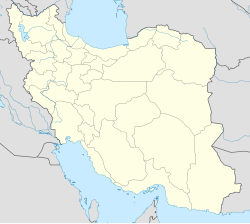세타1 크루시스
Theta1 Crucis| 관찰 데이터 Epoch J2000.0EquinoxJ2000.0(ICRS) | |
|---|---|
| 콘스텔레이션 | 십자형 |
| 적경 | 12h 03m 01.50130s[1] |
| 적위 | - 63° 18° 46.5406°[1] |
| 겉보기 등급(V) | 4.30[2] |
| 특성. | |
| 스펙트럼형 | A3(m) A8-A8[3] |
| U-B 색지수 | +0.03[2] |
| B-V 색지수 | +0.28[2] |
| 아스트로메트리 | |
| 반지름 속도(Rv) | - 2.4 km[4]/s |
| 고유운동(μ) | RA: - 802.35mas[1]/년 Dec.: +7.00[1] mas/년 |
| 시차()) | 13.88 ± 0.15 mas[1] |
| 거리 | 235 ± 3y (72.0 ± 0.8 pc) |
| 절대 등급(MV) | +1.29[5] |
| 궤도[6] | |
| 기간(P) | 24.4828 d |
| 편심(e) | 0.61 |
| 근일점 에폭(T) | 2419453.3470 JD |
| 근일점 인수()) (세컨더리) | 358.9° |
| 반진폭(K1) (프라이머리) | 46.1 km/s |
| 반진폭(K2) (세컨더리) | 56.1 km/s |
| 세부 사항 | |
| 덩어리 | 1.57[7] M☉ |
| 광도 | 81[8] L☉ |
| 표면 중력(log g) | 3.76[7] 킬로그램 |
| 온도 | 7341±250[7] K |
| 나이 | 1.1년식[7] |
| 기타 명칭 | |
| 데이터베이스 참조 | |
| 심바디 | 데이터. |
크루자리1 세타(δ1 Cru, Cru1)는 남십자자리에 있는 분광쌍성계이다.겉보기 등급은 4.[2]30으로m 육안으로 볼 수 있다.이 별까지의 [1]거리는 시차측정을 통해 측정되며 약 235광년이다.
이 쌍성은 24.5일의 주기와 0.61의 [6]이심률로 서로를 근접 공전하고 있다.주성분은 Am 별이며, 화학적으로 특이한 A형 별로서 특정 [10]원소의 흡수선에 변칙적인 변화가 나타납니다.이 별의 분류는 A3(m)[3]A8-A8이다.질량은 태양의 [7]157%로, 유효 온도 7341 [7]K의 외부 대기로부터 태양 광도의 81배를 방사한다[8].완전히 방사하는 A형 별의 경우 이례적으로 X선 방출이 검출되었으며, X선 방출은 궤도 [11]동반성으로부터 오는 것일 수 있습니다.
레퍼런스
- ^ a b c d e f van Leeuwen, F. (2007), "Validation of the new Hipparcos reduction", Astronomy and Astrophysics, 474 (2): 653–664, arXiv:0708.1752, Bibcode:2007A&A...474..653V, doi:10.1051/0004-6361:20078357, S2CID 18759600.
- ^ a b c d Mermilliod, J.-C. (1986), "Compilation of Eggen's UBV data, transformed to UBV (unpublished)", Catalogue of Eggen's UBV Data, SIMBAD, Bibcode:1986EgUBV........0M.
- ^ a b Houk, N.; Cowley, A. P. (1975), University of Michigan Catalogue of two-dimensional spectral types for the HD stars, vol. 1, Bibcode:1975mcts.book.....H.
- ^ Wilson, Ralph Elmer (1953), "General Catalogue of Stellar Radial Velocities", Carnegie Institute Washington D.C. Publication, Washington: Carnegie Institution of Washington, Bibcode:1953GCRV..C......0W.
- ^ Eggen, Olin J. (July 1998), "The Age Range of Hyades Stars", The Astronomical Journal, 116 (1): 284–292, Bibcode:1998AJ....116..284E, doi:10.1086/300413.
- ^ a b Pourbaix, D.; Tokovinin, A. A.; Batten, A. H.; Fekel, F. C.; Hartkopf, W. I.; et al. (2004), "SB9: The ninth catalogue of spectroscopic binary orbits", Astronomy & Astrophysics, 424 (2): 727–732, arXiv:astro-ph/0406573, Bibcode:2004A&A...424..727P, doi:10.1051/0004-6361:20041213, S2CID 119387088.
- ^ a b c d e f David, Trevor J.; Hillenbrand, Lynne A. (2015), "The Ages of Early-Type Stars: Strömgren Photometric Methods Calibrated, Validated, Tested, and Applied to Hosts and Prospective Hosts of Directly Imaged Exoplanets", The Astrophysical Journal, 804 (2): 146, arXiv:1501.03154, Bibcode:2015ApJ...804..146D, doi:10.1088/0004-637X/804/2/146, S2CID 33401607.
- ^ a b McDonald, I.; et al. (2012), "Fundamental Parameters and Infrared Excesses of Hipparcos Stars", Monthly Notices of the Royal Astronomical Society, 427 (1): 343–57, arXiv:1208.2037, Bibcode:2012MNRAS.427..343M, doi:10.1111/j.1365-2966.2012.21873.x, S2CID 118665352.
- ^ "tet01 Cru". SIMBAD. Centre de données astronomiques de Strasbourg. Retrieved 2016-10-06.
{{cite web}}: CS1 유지보수: 포스트스크립트(링크) - ^ Renson, P.; Manfroid, J. (May 2009), "Catalogue of Ap, HgMn and Am stars", Astronomy and Astrophysics, 498 (3): 961–966, Bibcode:2009A&A...498..961R, doi:10.1051/0004-6361/200810788.
- ^ Schröder, C.; Schmitt, J. H. M. M. (November 2007), "X-ray emission from A-type stars", Astronomy and Astrophysics, 475 (2): 677–684, Bibcode:2007A&A...475..677S, doi:10.1051/0004-6361:20077429.


